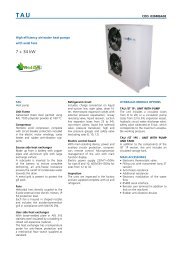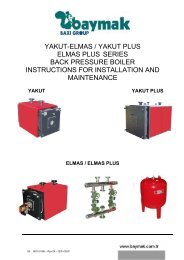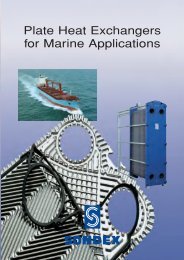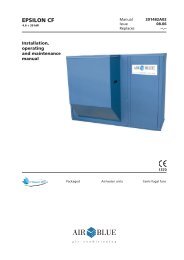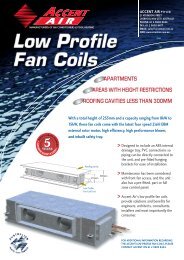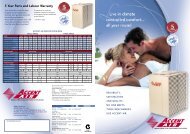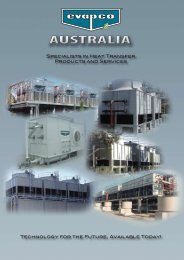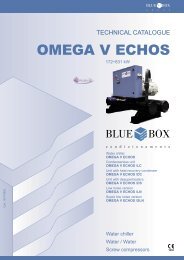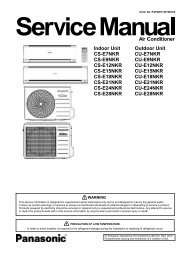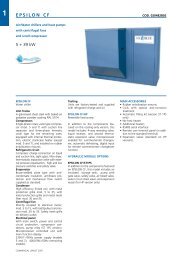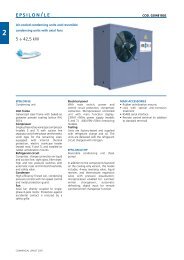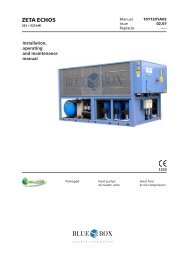KAPPA V ECHOS AC IOM.pdf - Industrial Air
KAPPA V ECHOS AC IOM.pdf - Industrial Air
KAPPA V ECHOS AC IOM.pdf - Industrial Air
You also want an ePaper? Increase the reach of your titles
YUMPU automatically turns print PDFs into web optimized ePapers that Google loves.
5 POSITIONING<br />
Read the following points carefully when choosing the most suitable site for the unit and its connections:<br />
- dimensions and connection point of hydraulic pipelines;<br />
- location of the electrical power connection point;<br />
- accessibility for maintenance and repair work;<br />
- loading capacity and compactness of the supporting surface;<br />
- ventilation of air-cooled condenser;<br />
- orientation and exposure to sunlight; as far as possible the condenser coil should not be exposed to direct<br />
sunlight;<br />
- direction of prevailing winds: do not position the unit in such a way that prevailing winds can cause air recirculation<br />
at the condenser coil;<br />
- type of support surface: to limit the risk of overheating, do not install the unit on a dark coloured surface (e.g.<br />
bitumen roofing membranes and compounds);<br />
- possible sound reverberation.<br />
All models in the <strong>KAPPA</strong> V <strong>ECHOS</strong> series are designed for exterior installation: to avoid the risk of air recirculation<br />
units must not be covered by a shelter roof or located under trees (even if the unit is only partially covered).<br />
It is advisable to make a supporting plinth, perfectly levelled and horizontal, of dimensions commensurate with<br />
the footprint of the unit. This precaution is of the greatest importance if the unit is to be located on unstable<br />
ground. Picture 2 shows a typical supporting plinth structure.<br />
15-20 cm<br />
The floor slab should be:<br />
Figure 2<br />
Plinth slab<br />
- made with a proper foundation raised 15-20 cm above ground level,<br />
- with a cork underlay sealed around the perimeter,<br />
- flat, horizontal and capable of supporting 150% of the unit’s operating weight.<br />
- at least 30 cm longer and wider than the unit.<br />
The unit transmits a low level of vibration to the supporting structure: it is recommended that a layer of rigid<br />
rubber sheeting is placed between the base of the unit and the supporting surface.<br />
If a higher level of vibration damping is required, use anti-vibration mounts (contact Bluebox for details).<br />
When installing on roofs or intermediate floors, units and piping must be isolated from walls and ceilings.<br />
The units should not be installed next to offices, bedrooms, or other areas where low noise levels are a necessity.<br />
To avoid excess sound reverberation do not install the units in narrow or confined spaces.<br />
Blue Box 22<br />
Sealant<br />
Cork underlayment<br />
Soil





